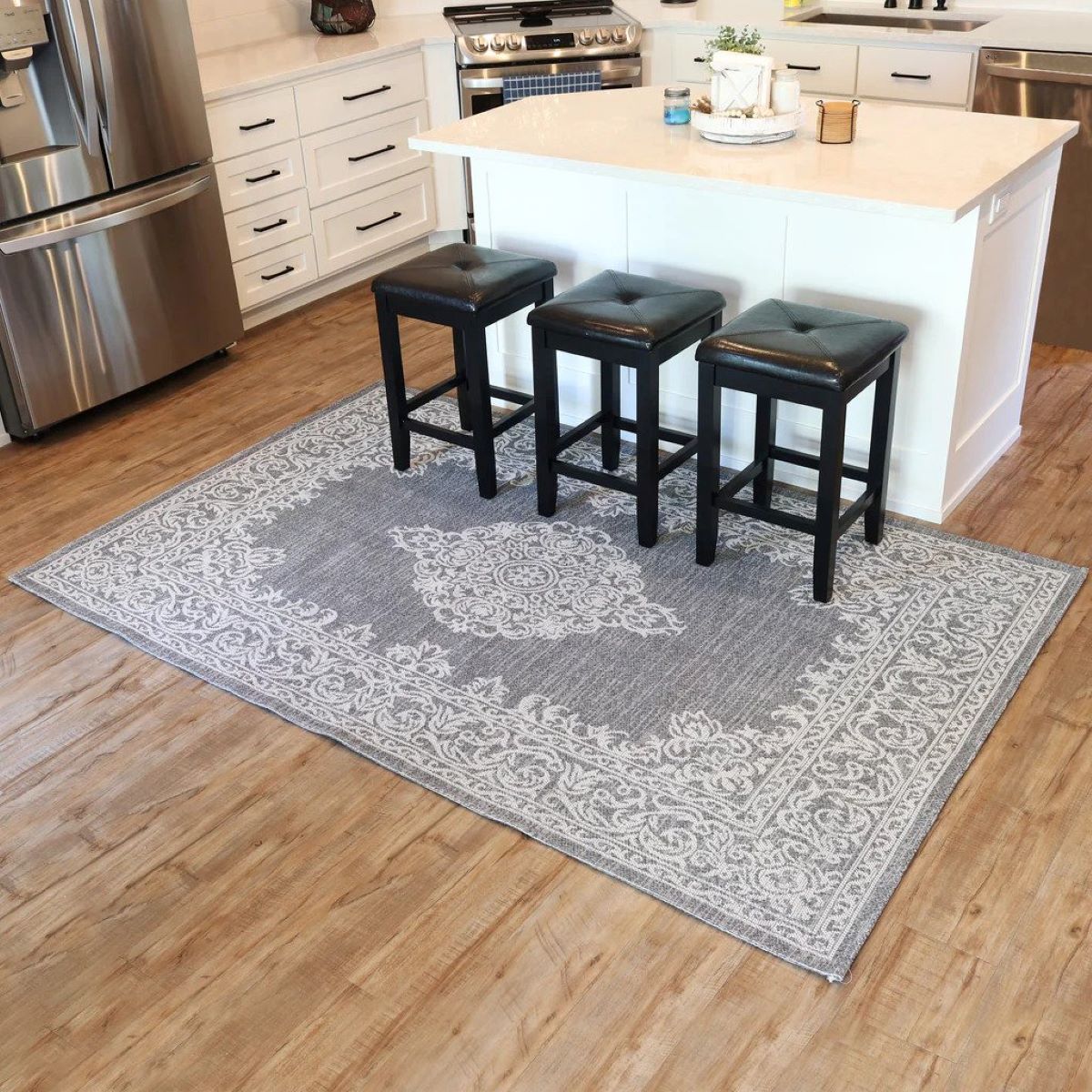

Articles
How To Get New Rugs To Lay Flat
Modified: January 9, 2024
Discover effective articles on how to get new rugs to lay flat and prevent them from curling up. Say goodbye to tripping hazards and enjoy flat, beautiful rugs in no time!
(Many of the links in this article redirect to a specific reviewed product. Your purchase of these products through affiliate links helps to generate commission for Storables.com, at no extra cost. Learn more)
Introduction
Welcome to the world of new rugs! There’s nothing quite like the feeling of bringing a fresh, stylish rug into your home to enhance the decor and add a cozy touch to any room. However, you may have encountered the frustrating issue of your new rug refusing to lay flat on the floor. Instead, it curls up at the corners or ripples unevenly, causing a potential tripping hazard and detracting from the overall aesthetic appeal. But fear not! In this article, we will explore various methods to help your new rugs lay flat and stay flat.
Understanding why rugs don’t lay flat can help us find the most effective solutions. Rugs are often tightly rolled during transportation and storage, causing the fibers and backing to become compressed. This compression prevents the rug from lying flat when unrolled. Additionally, some rugs may have a natural tendency to curl at the corners due to the manufacturing process or the materials used. Whatever the cause may be, we have several methods that can help resolve this issue and ensure your rug stays flat.
Key Takeaways:
- Transform your new rug from stubborn to stunning with simple methods like weighting it down, using heat, reverse rolling, stretching and tugging, steam ironing, or rug gripper pads. Enjoy a flat, stylish rug in no time!
- If your new rug refuses to lay flat, seek professional assistance for delicate or challenging cases. Choose the best method suited for your rug’s material and condition, and enjoy a beautifully laid flat rug that enhances your home decor.
Read more: How To Get A Rug To Lay Flat On Carpet
Why Rugs Don’t Lay Flat
There are several reasons why new rugs may not lay flat when first unrolled. Understanding these reasons can help you choose the most effective method to solve the problem.
1. Storage and Transportation: Rugs are often tightly rolled and stored for extended periods, which can cause the fibers and backing to become flattened or warped. This compression prevents the rug from laying flat when unrolled. Similarly, the rug may experience rough handling during transportation, further exacerbating the issue.
2. Material and Construction: The material and construction of the rug can also affect its ability to lay flat. Rugs with a thicker pile or heavier weight tend to be more prone to curling or rippling. Additionally, if the rug is made of synthetic materials, it may have a memory effect, causing it to retain its rolled shape for longer.
3. Humidity and Temperature: Environmental factors such as humidity and temperature can impact the shape of the rug. Excessive humidity can cause the fibers to absorb moisture and expand, leading to curling or rippling. In contrast, low humidity levels can cause the rug to dry out and become stiff, making it difficult to lay flat.
4. Manufacturing Process: Some rugs may have a natural tendency to curl at the corners due to the manufacturing process. This can be caused by factors such as uneven tension during weaving or the use of certain materials that have a tendency to curl.
Now that we understand why new rugs often don’t lay flat, let’s explore some effective methods to encourage them to lay flat and stay in place.
Method 1: Weight It Down
One of the simplest and most effective methods to encourage your new rug to lay flat is by using weights. This method utilizes the power of gravity to gradually flatten the rug over time. Here’s how you can do it:
- Start by unrolling the rug on a clean and flat surface, preferably the floor where you intend to use it.
- Identify the areas where the rug is curling or rippling, typically at the corners or along the edges.
- Place heavy objects, such as books, weights, or furniture, on top of the curled or rippled areas. Make sure the weights are evenly distributed to provide balanced pressure.
- Leave the weights on the rug for at least 24 to 48 hours, allowing the rug to gradually flatten under the pressure.
- After the designated time, carefully remove the weights and observe if the rug has laid flat. If not, you may repeat the process or consider other methods.
It’s important to note that this method works best for rugs made of materials that can withstand the pressure of weights. Thicker and heavier rugs are usually more suitable for this technique. However, if you’re dealing with a delicate or fragile rug, it’s advisable to explore alternative methods to avoid any damage or distortion.
Weighting down your rug is a simple and cost-effective solution that requires minimal effort. It allows the rug to gradually relax and release any tension, helping it regain its original shape and lay flat on the floor.
Method 2: Use Heat
Another effective method to encourage your new rug to lay flat is by using heat. Heat can help soften the fibers of the rug and make them more pliable, allowing you to manipulate the shape and flatten any curling or rippling. Here’s how you can use heat to solve the problem:
- Start by placing your rug in a well-ventilated area, away from any flammable materials.
- Using a handheld steam cleaner or a regular iron with a steam function, apply steam to the curled or rippled areas of the rug.
- Gently press down on the dampened areas with your hands or a clean cloth, applying slight pressure to encourage the fibers to relax.
- Continue steaming and pressing until the rug starts to lay flat. Be careful not to over-saturate the rug with steam, as excessive moisture can cause damage.
- Once the rug has laid flat, allow it to air dry completely before placing it back on the floor.
It’s important to note that this method may not be suitable for all types of rugs. Delicate or natural-fiber rugs, such as wool or silk, may be more sensitive to heat and require additional care. Always refer to the manufacturer’s guidelines or consult a professional if you’re uncertain about using heat on your specific rug.
Using heat can be an effective and efficient method to coax your new rug into laying flat. The combination of steam and gentle pressure helps to relax the fibers and reshape the rug, giving it a smooth and flat appearance.
Method 3: Reverse Rolling
Reverse rolling is a simple and effective method to encourage your new rug to lay flat. By rolling the rug in the opposite direction, you can help counteract any tendency for it to curl or ripple. Here’s how you can use the reverse rolling technique:
- Start by unrolling the rug on a clean and flat surface.
- Identify the areas where the rug is curling or rippling.
- Gently roll the rug in the opposite direction, starting from one corner and working your way across the width of the rug.
- Secure the rolled rug with straps or heavy objects to keep it in place.
- Leave the rug in this reverse rolled position for at least 24 to 48 hours, allowing the fibers to relax and reshape.
- After the designated time, carefully unroll the rug and observe if it has laid flat. If needed, you can repeat the process or consider combining it with other methods.
Reverse rolling helps to reverse the tension and shape of the rug, allowing it to gradually adjust and lay flat. It is particularly effective for rugs that have been tightly rolled during storage or transportation.
Keep in mind that reverse rolling may not work for all types of rugs or for rugs with a significant amount of creases or ripples. It’s important to choose a method that is best suited for your specific rug’s material and construction.
By using the reverse rolling technique, you can encourage your new rug to uncurl and lay flat, ensuring a smooth and even appearance on your floor.
To get new rugs to lay flat, try rolling the rug in the opposite direction for a few hours to release any creases. Placing heavy objects on the edges can also help flatten it out.
Read more: How To Get Outdoor Rug To Lay Flat
Method 4: Stretching and Tugging
If your new rug is not laying flat due to stubborn wrinkles or folds, stretching and tugging can be an effective method to help smooth it out. This method involves physically manipulating and pulling the rug to encourage it to lay flat. Here’s how you can use stretching and tugging to flatten your rug:
- Start by laying the rug on a clean and flat surface.
- Identify the areas where the rug is wrinkled or folded.
- Gently pull and stretch the rug in the opposite direction of the wrinkles or folds. Start from the edges and work your way towards the center.
- Apply steady and even pressure as you stretch the rug, being careful not to pull too forcefully to avoid damaging the fibers or backing.
- Continue stretching and tugging until the wrinkles and folds begin to loosen and the rug starts to lay flat.
- Once the rug has flattened, allow it to rest and settle for some time to ensure it maintains its new shape.
It’s important to note that some rugs may require more extensive stretching and tugging to fully smooth out stubborn wrinkles or folds. In such cases, you can consider using heavy objects or weights to help stretch the rug or seek professional assistance if needed.
Stretching and tugging can be an effective method to encourage your new rug to lay flat, especially when dealing with deep wrinkles or folds. However, it’s essential to exercise caution and avoid applying excessive force to prevent any damage to the rug.
Method 5: Steam Ironing
If your new rug is not laying flat and has stubborn creases or folds, steam ironing can be a useful method to help smooth it out. This method utilizes the power of steam and heat to relax the fibers and reshape the rug. Here’s how you can use steam ironing to encourage your rug to lay flat:
- Start by setting up an ironing board or a flat, heat-resistant surface.
- Fill your steam iron with water and set it to the appropriate temperature for your rug’s material. Check the manufacturer’s guidelines or consult a professional if you’re unsure.
- Place a clean and thin cloth or towel over the wrinkled or folded areas of the rug.
- Gently hover the steam iron over the cloth, allowing the steam to penetrate the rug’s fibers. Avoid direct contact between the iron and the rug to prevent any damage.
- Move the iron back and forth over the cloth to distribute the steam evenly and apply gentle pressure to smooth out the wrinkles or folds.
- Continue this process, adjusting the heat and steam settings as necessary, until the rug starts to lay flat and the creases are less visible.
- Once the rug has flattened, allow it to cool and dry completely before removing the cloth.
It’s important to note that steam ironing may not be suitable for all types of rugs, especially delicate or natural-fiber rugs that are more sensitive to heat. Always refer to the manufacturer’s guidelines or consult a professional if you’re uncertain about using steam ironing on your specific rug.
By using steam ironing, you can help relax the fibers and reshape your rug, ensuring that it lays flat and maintains its smooth appearance.
Method 6: Rug Gripper Pads
If you’re looking for a non-invasive and easy solution to keep your new rug in place and prevent it from curling or sliding, rug gripper pads can be a great option. These pads provide a secure grip between the rug and the floor, helping it stay flat and stable. Here’s how you can use rug gripper pads to keep your rug in place:
- Start by ensuring that the surface where you plan to place the rug is clean and free of debris.
- Measure the dimensions of your rug to determine the size of the rug gripper pads you will need.
- Place the rug gripper pads on the floor, following the measurements of your rug.
- Carefully unroll your rug on top of the rug gripper pads, ensuring that all edges align properly.
- Press down on the rug to help it adhere to the rug gripper pads and create a secure bond.
- Adjust the rug as needed to ensure it lays flat and is positioned correctly on the rug gripper pads.
Rug gripper pads work by providing traction between the rug and the floor, preventing it from shifting or curling at the edges. These pads are typically made of non-slip materials, such as rubber or felt, that create friction and grip the floor surface.
One of the advantages of using rug gripper pads is that they are easily removable and reusable. You can reposition your rug or switch it to a different location without leaving any residue or marks on the floor.
Rug gripper pads are an effective solution to keep your rug in place and prevent it from curling or sliding. They provide stability and grip, ensuring your rug lays flat and stays securely in position.
Method 7: Professional Assistance
If all else fails or you’re dealing with a particularly stubborn rug that refuses to lay flat, seeking professional assistance can be a wise option. Professional rug cleaners and retailers often have the expertise and tools to handle challenging situations and restore your rug to its proper shape. Here’s how professional assistance can help:
- Contact a reputable rug cleaning service or rug retailer in your area.
- Explain the issue you’re facing with your rug and provide any relevant details, such as the material and size of the rug.
- Schedule an appointment for the professionals to assess and evaluate your rug.
- The professionals will examine the rug and determine the best course of action based on its specific needs.
- They may utilize specialized equipment, such as rug stretching machines or steamers, to help flatten the rug and remove any wrinkles or curls.
- Depending on the condition of the rug, they may also recommend additional treatments, such as rug blocking or hand stretching, to achieve optimal results.
- Once the necessary steps are taken, the professionals will carefully handle and deliver the rug back to you, restored to its original shape.
Professional assistance can be especially beneficial for delicate or valuable rugs that require extra care and expertise. The professionals have the knowledge and experience to handle various rug materials and address specific issues effectively.
However, it’s essential to choose a reputable and experienced professional to ensure the proper care and treatment of your rug. Consider reading reviews, checking certifications, and asking for recommendations to find a reliable service provider.
By seeking professional assistance, you can entrust your rug to experts who will employ their specialized techniques and equipment to help it lay flat and regain its original beauty.
Read more: How To Get New Construction Listings
Conclusion
Dealing with a new rug that won’t lay flat can be a frustrating experience. However, with the right methods and techniques, you can encourage your rug to lay flat and enhance the overall appearance of your space. Whether you opt for weight, heat, reverse rolling, stretching and tugging, steam ironing, rug gripper pads, or seek professional assistance, each method offers a unique approach to resolve the issue.
Weighting down the rug provides a simple and effective way to allow the rug to gradually relax and flatten under pressure. Using heat, such as with steam ironing, can soften the fibers and reshape the rug to eliminate wrinkles and folds. Reverse rolling helps to reverse the tension and shape of the rug, encouraging it to lay flat over time.
Stretching and tugging involve physically manipulating the rug to smooth out stubborn wrinkles or folds. Steam ironing uses steam to relax the fibers and reshape the rug, while rug gripper pads provide a non-invasive solution by preventing the rug from sliding or curling at the edges. Lastly, seeking professional assistance can be beneficial for challenging cases or delicate rugs that require specialized care and expertise.
Remember to choose the method or combination of methods that suit your specific rug’s material and condition. It’s important to exercise caution and follow the manufacturer’s guidelines or seek professional advice when necessary to avoid damaging your rug.
By implementing these methods, you can transform your rug from a stubborn and unruly object to a beautiful and functional part of your home decor. Enjoy the process of bringing your new rug to life and revel in the satisfaction of a perfectly laid flat rug that adds warmth, style, and comfort to your living space.
Frequently Asked Questions about How To Get New Rugs To Lay Flat
Was this page helpful?
At Storables.com, we guarantee accurate and reliable information. Our content, validated by Expert Board Contributors, is crafted following stringent Editorial Policies. We're committed to providing you with well-researched, expert-backed insights for all your informational needs.

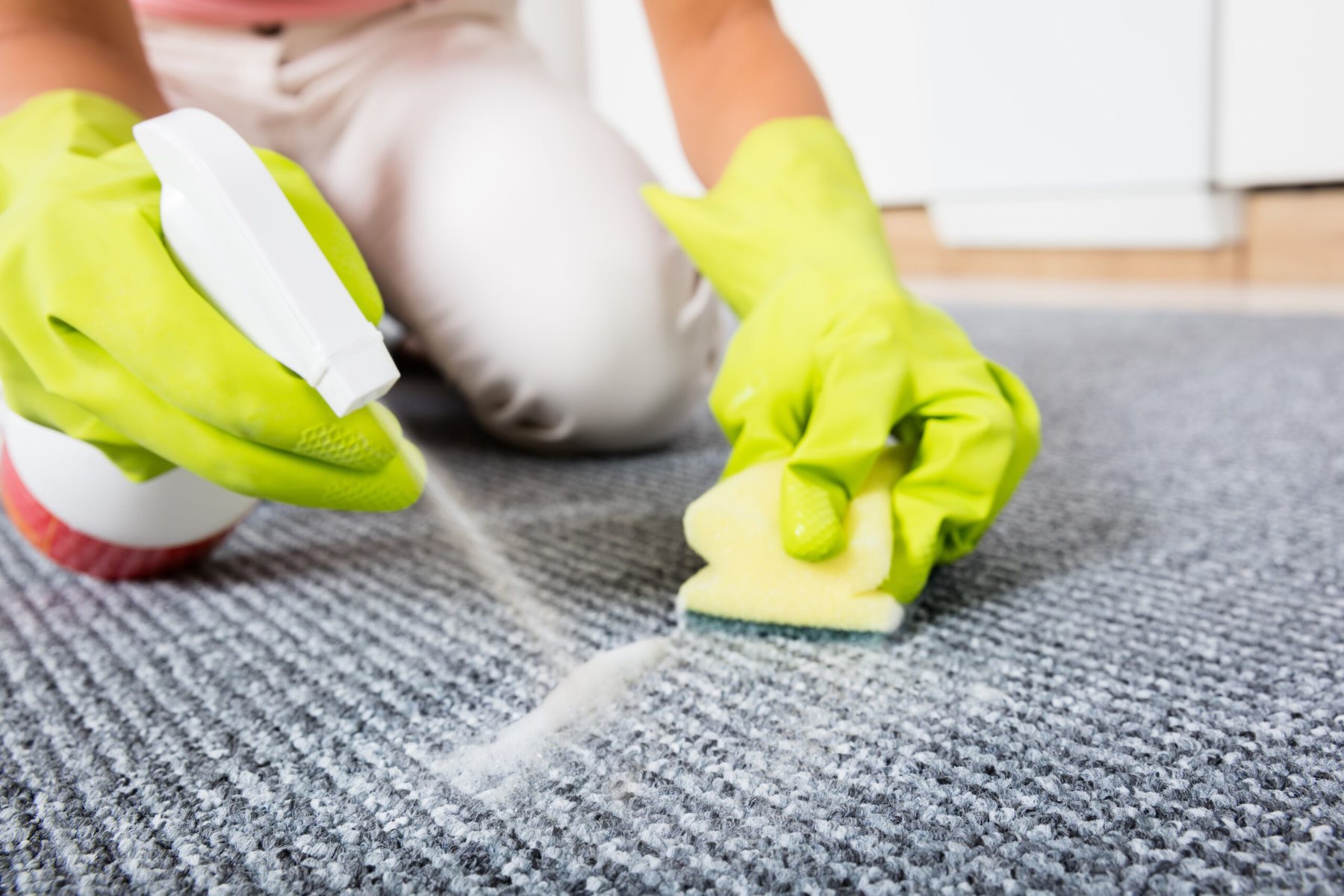
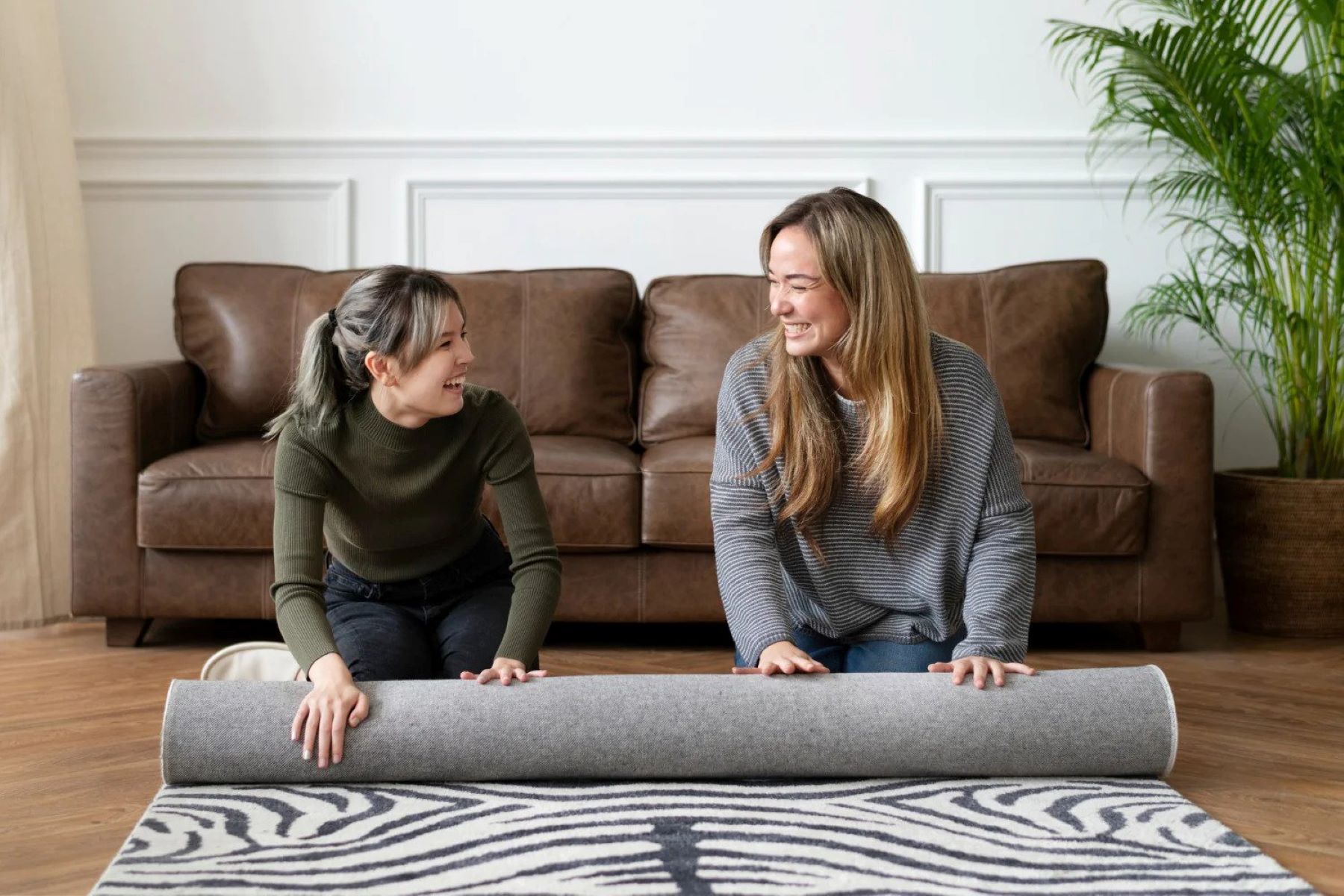
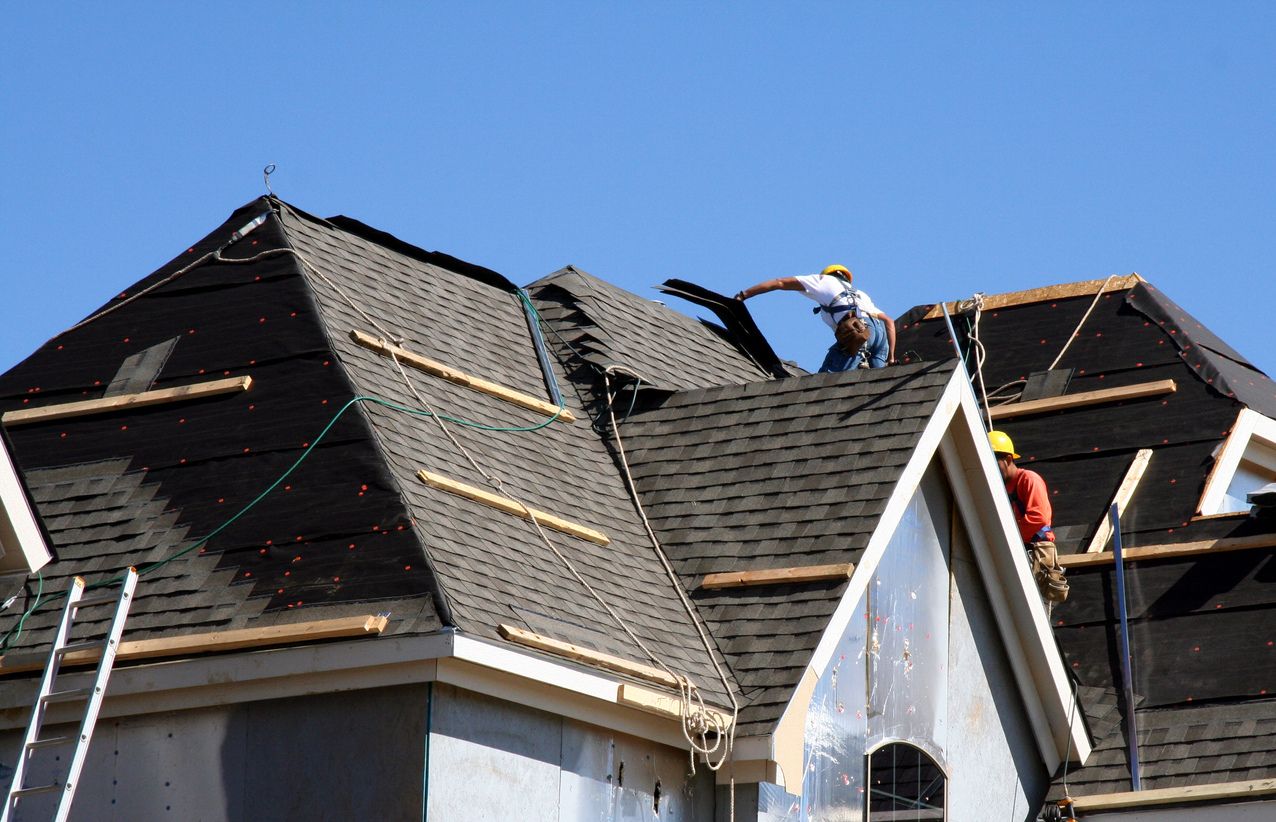
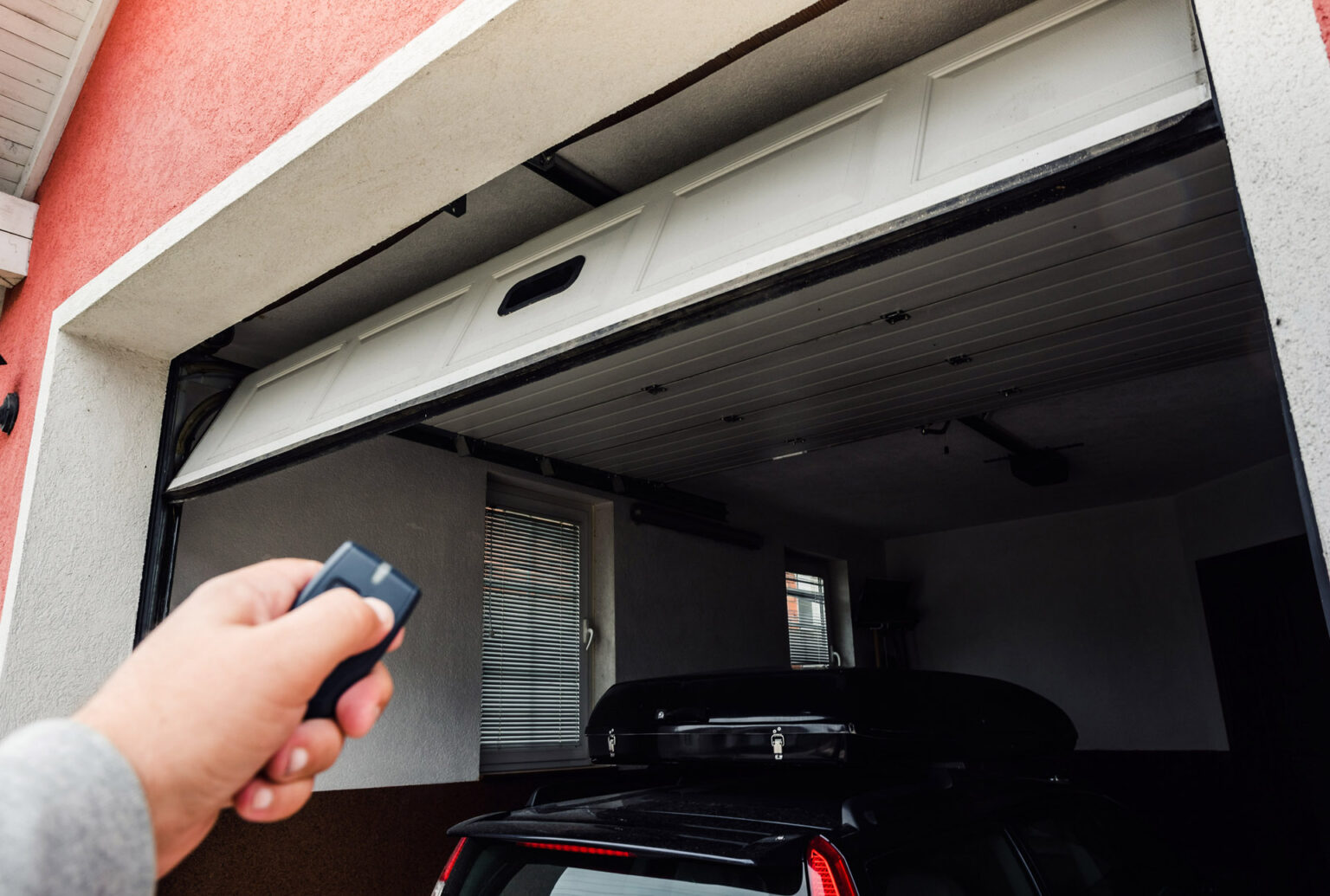


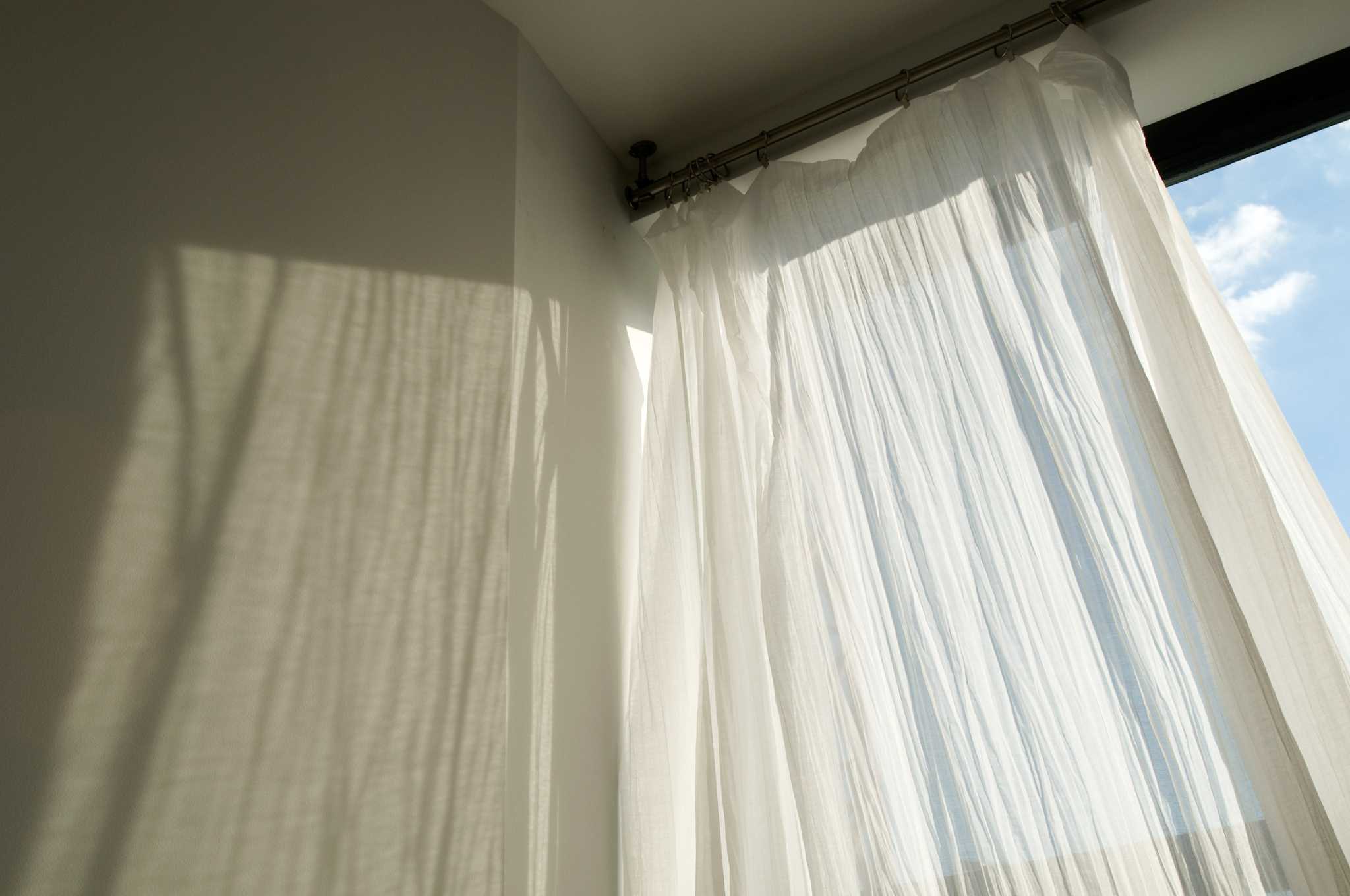
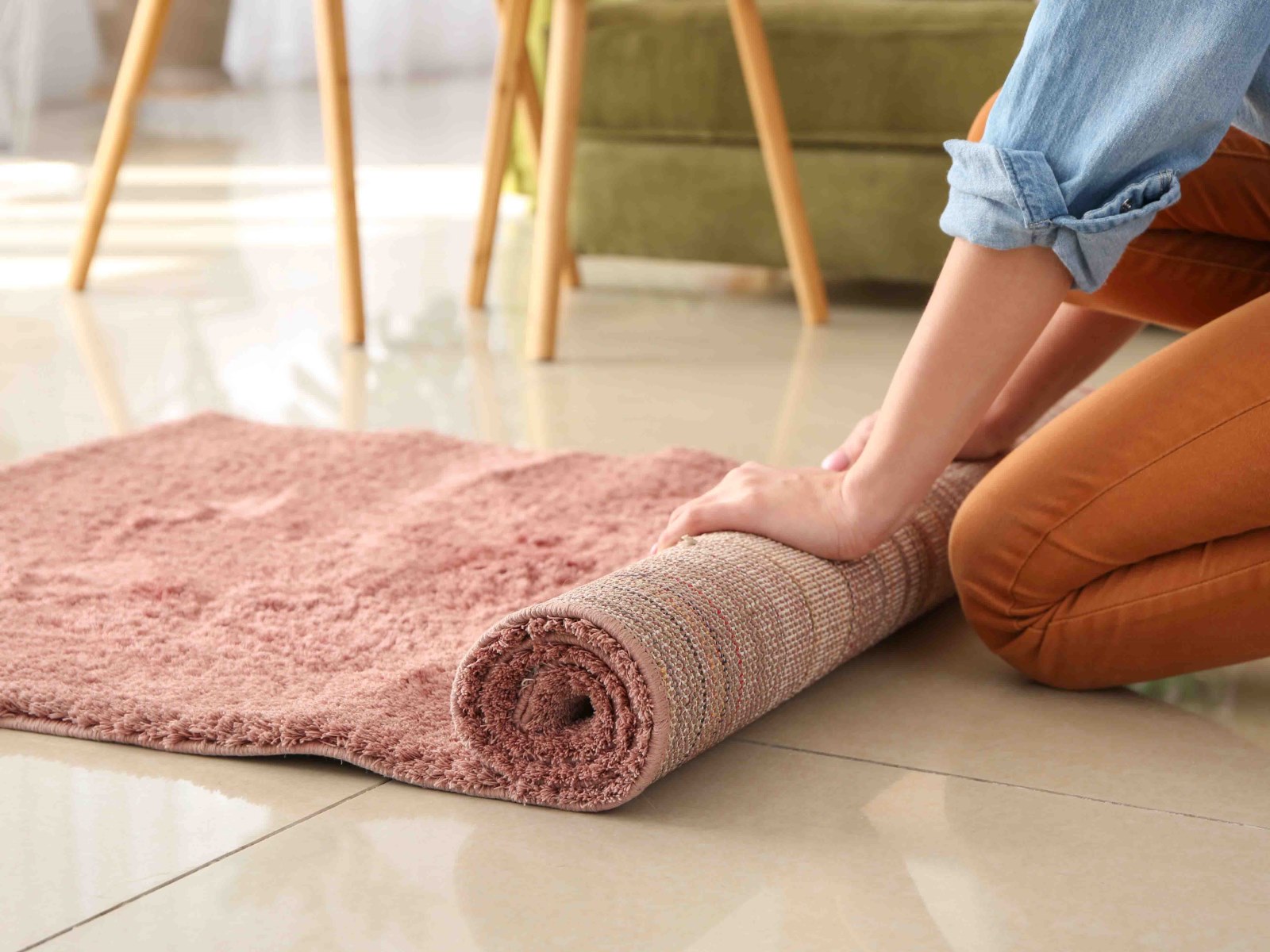

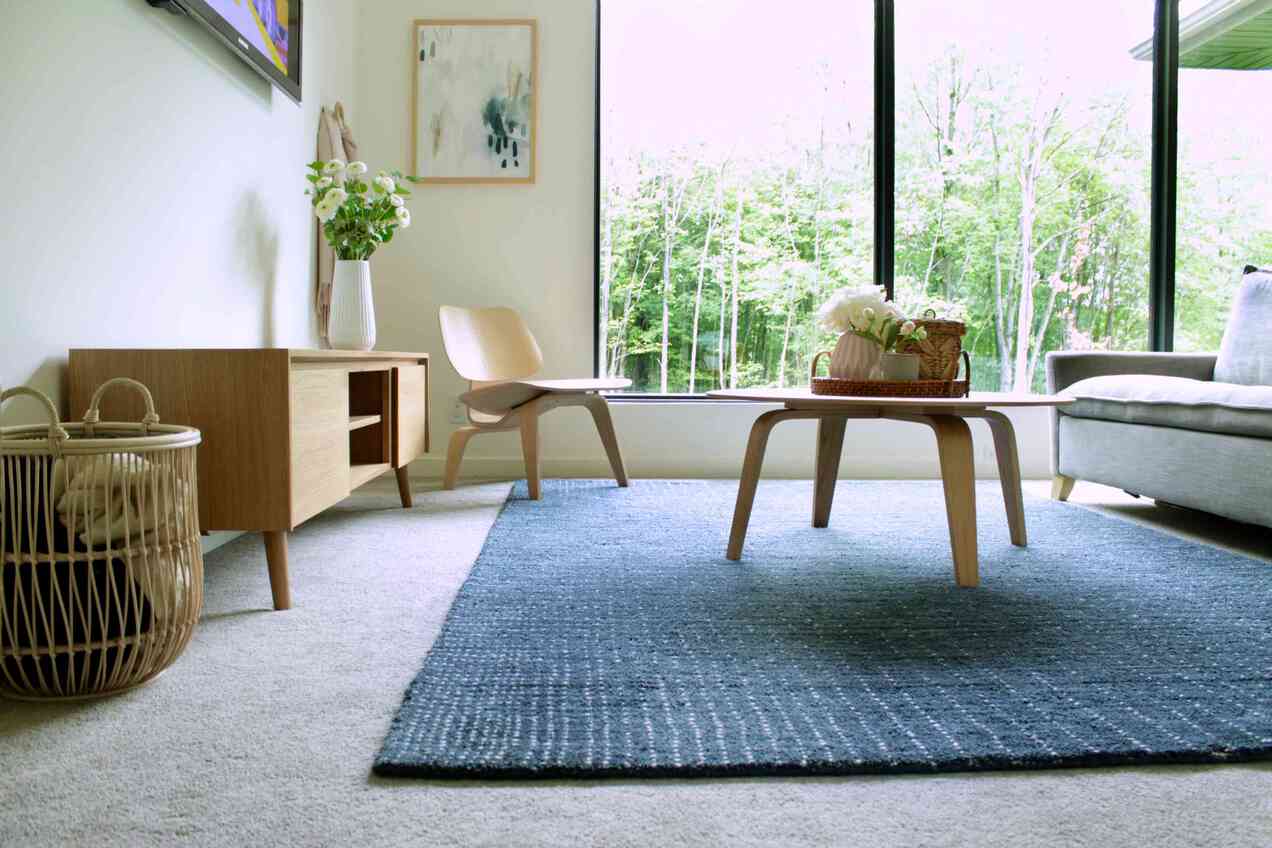

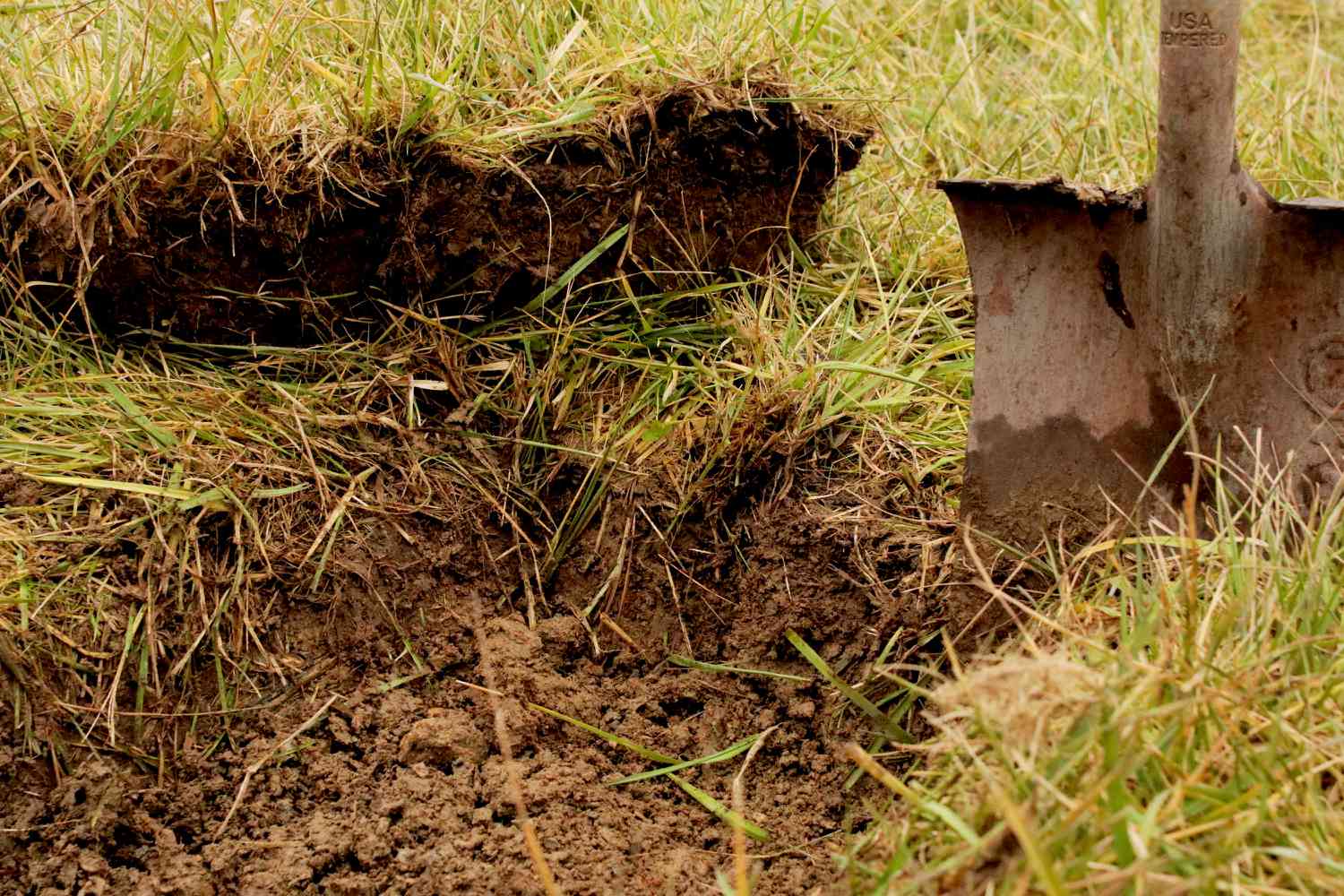

0 thoughts on “How To Get New Rugs To Lay Flat”